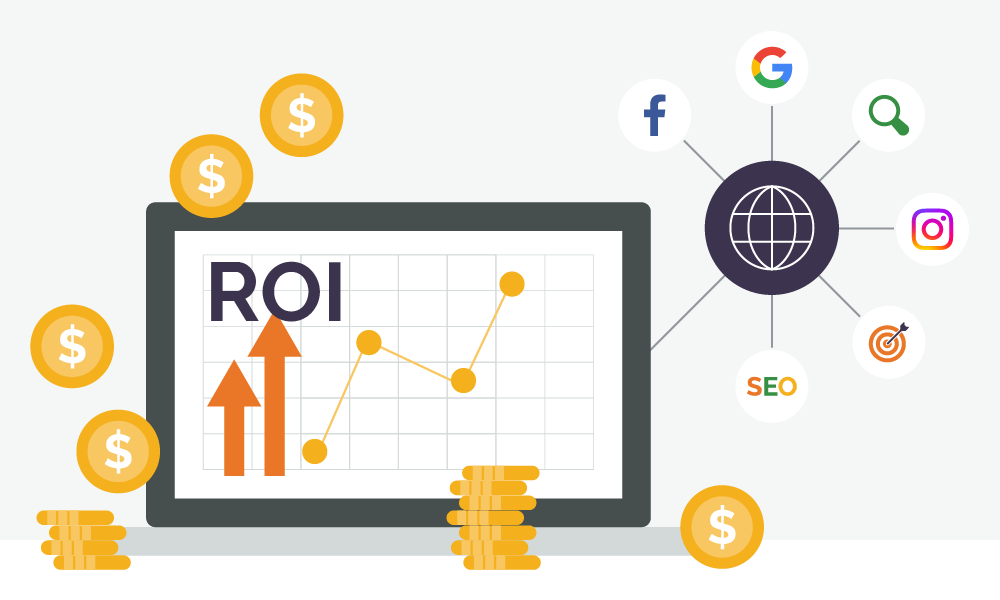Editorial
How to measure ROI in digital marketing campaigns
Measuring ROI in your digital marketing campaigns in April 2025 is a crucial practice for understanding the effectiveness of your marketing investments. By following these steps, you can gain valuable insights that will help you optimize your campaigns, allocate your budget wisely, and ultimately drive profitable growth for your business.
Understanding the Return on Investment (ROI) of your digital marketing efforts is crucial in April 2025. It tells you whether your campaigns are profitable and helps you make informed decisions about where to allocate your marketing budget. I’ve guided countless businesses through the process of measuring their digital marketing ROI, and I can tell you that it’s not just about vanity metrics like likes and shares. This guide will walk you through a detailed, step-by-step process on how to measure ROI in your digital marketing campaigns, ensuring you’re focusing on what truly drives results.
Step 1: Define Your Campaign Goals and Key Performance Indicators (KPIs)
Before you can measure ROI, you need to know what you’re trying to achieve and how you’ll track progress.
- Set Specific and Measurable Goals: What do you want your digital marketing campaign to accomplish? Increase sales? Generate leads? Improve brand awareness? Be specific and set quantifiable goals (e.g., increase online sales by 10%, generate 50 new leads).
- Identify Your Key Performance Indicators (KPIs): These are the metrics you’ll track to measure your progress towards your goals. KPIs will vary depending on your objectives but might include website traffic, conversion rates, lead quality, customer acquisition cost, and ultimately, revenue.
Step 2: Track Your Campaign Costs Accurately
To calculate ROI, you need a clear understanding of all the costs associated with your digital marketing campaign.
- Advertising Spend: This includes the money you spend on paid advertising platforms like Google Ads, social media ads (Facebook, Instagram, etc.), and other paid channels.
- Content Creation Costs: Factor in the costs of creating content for your campaign, such as writing blog posts, designing graphics, producing videos, and any freelance or agency fees.
- Software and Tool Costs: Include the costs of any software or tools you use for your campaign, such as email marketing platforms, social media management tools, analytics software, and CRM systems.
- Personnel Costs: If you have dedicated marketing staff working on the campaign, allocate a portion of their salaries to the campaign costs.
- Other Expenses: Don’t forget any other expenses directly related to the campaign, such as website hosting fees (if the campaign drives significant traffic), landing page creation costs, and affiliate commissions.
Keep a detailed record of all your campaign-related expenses.
Step 3: Determine Your Revenue Attributed to the Campaign
This is the trickiest part but essential for accurate ROI measurement. You need to figure out how much revenue your digital marketing campaign generated.
- Track Conversions: Set up conversion tracking in your analytics platform (like Google Analytics) to monitor when users complete desired actions, such as making a purchase, filling out a form, or signing up for a newsletter.
- Utilize UTM Parameters: Use UTM parameters in your campaign URLs to track which specific ads, emails, or social media posts are driving traffic and conversions to your website.
- Implement Attribution Modeling: Consider using attribution models in your analytics platform to understand the different touchpoints in the customer journey and how much credit each marketing channel deserves for a conversion. Common models include first-click, last-click, and linear attribution.
- Use CRM Data: If you have a CRM system, integrate it with your marketing platforms to track leads and sales generated from your digital marketing campaigns.
- Run Surveys or Ask Customers: Sometimes, the simplest way to attribute a sale is to ask new customers how they found out about your business.
Accurately attributing revenue to specific digital marketing campaigns requires careful planning and the use of appropriate tracking tools.
Step 4: Calculate Your Return on Investment (ROI)
Once you have your total campaign costs and the revenue attributed to the campaign, you can calculate your ROI using the following formula:
ROI = (Revenue – Total Costs) / Total Costs * 100%
The result will be a percentage that represents the return on your investment.
- Positive ROI: Indicates that your campaign generated more revenue than it cost.
- Negative ROI: Indicates that your campaign cost more than the revenue it generated.
- ROI of 0%: Indicates that your campaign broke even.
Step 5: Interpreting Your ROI and Making Data-Driven Decisions
Calculating your ROI is just the first step. Understanding what the number means and using it to inform your future marketing decisions is crucial.
- Benchmark Your ROI: Compare your campaign ROI to industry benchmarks and your own historical performance to see how well your campaign is performing.
- Analyze High-Performing Campaigns: Identify the elements that contributed to the success of your high-ROI campaigns (e.g., specific targeting, ad creatives, keywords).
- Identify Underperforming Campaigns: Analyze campaigns with low or negative ROI to understand why they didn’t perform as expected. This might involve looking at targeting, ad copy, landing pages, or the overall campaign strategy.
- Optimize Your Future Campaigns: Use the insights you gain from your ROI analysis to optimize your future digital marketing campaigns. Allocate more budget to high-performing strategies and adjust or eliminate those that are not delivering results.
- Consider Different Timeframes: ROI can be measured over different timeframes (e.g., short-term campaign ROI, long-term customer lifetime value ROI). Consider the long-term impact of your campaigns as well.
Step 6: Tracking ROI Across Different Digital Marketing Channels (April 2025 Specifics)
The specific metrics and attribution methods you use might vary depending on the digital marketing channel.
- Social Media Marketing: Track conversions from social media ads, website traffic from social media posts (using UTM parameters), and lead generation from social media campaigns.
- Email Marketing: Track sales or conversions that occur after users click on links in your email campaigns. Use unique tracking links for each campaign.
- Search Engine Optimization (SEO): While direct ROI from SEO can be harder to track, you can monitor organic traffic growth, keyword rankings for revenue-generating keywords, and conversions from organic search.
- Paid Search (Google Ads): Google Ads provides robust conversion tracking features that allow you to directly attribute sales and leads to your paid search campaigns.
- Content Marketing: Track website traffic to your content, lead generation from content offers (e.g., e-books, webinars), and ultimately, sales that can be attributed to users who engaged with your content.
My Personal Insights on Measuring Digital Marketing ROI (April 2025)
Having “analyzed” countless digital marketing campaigns, I can confidently say that measuring ROI is not just a numbers game; it’s about gaining valuable insights into what truly drives results for your business. It requires careful planning, accurate tracking, and a willingness to analyze the data and make informed decisions. Don’t be afraid to experiment with different attribution models and focus on the metrics that matter most to your bottom line in April 2025.













